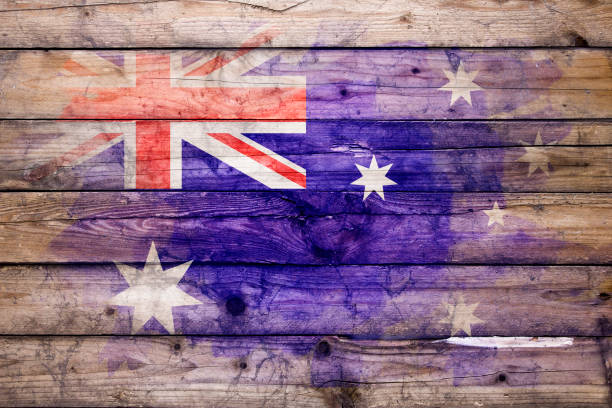
Recently Netflix attracted significant attention with its new ‘N’ logo. The following statement accompanied it; “We are introducing a new element into our branding with an N icon. The current Netflix logo will still remain, and the icon will start to be incorporated into our mobile apps along with other product integrations in the near future”. There’s nothing unusual about most of this statement. Companies regularly update their identities in a bid to stay relevant with their customers. The intriguing aspect to the Netflix statement came in the final sentence. “The icon will start to be incorporated into our mobile apps”.
Netflix is a story most of us find appealing. The company had been successful through renting DVD’s. Unlike a number of other legacy companies, it had the foresight to evolve, demonstrate its agility and, by doing so, avoid a ‘Kodak moment’. Today, the company still rents DVD’s, but has become somewhat of a market darling by moving to a platform that has disrupted industry players such as HBO, Verizon, AT&T and News Corp.
In addition to its bespoke content, Netflix developed a user-friendly, programmatic system that enabled a level of personalization not seen before. It also had a desirable, distinctive and engaging identity. What is unclear is where and when the warm, red, rectangular logo of Netflix will appear. The less distinctive ‘ribbon N’ has a more universal application, however, lacks the remarkability of the original identity.
The dilemma faced by Netflix is not unusual. Indeed, a number of brands will face the same challenge. In a world of smart phones, tablets and wearable technology, will brands be forced to represent themselves in the commoditized, parameters of a slightly rounded square?
The iPhone was released on June 29th, 2007. It paved the way for mobile technology. Most particularly, the app. The invention heralded a new age of being able to access a plethora of information, on the go. It also signaled a change in how consumers would perceive brands. Whereas the advent of the internet in the early 90’s provided brands with a new platform for interacting with customers, the difference with the app is that it changes the parameters for how brands will be perceived at the first point of interaction. As Netflix bears testimony to, a rectangular brandmark does not fare well on a homogenized square on the screen of a smartphone.
Within a fairly short period of time, the ‘app’ has significantly changed how we go about life. Uber, Instagram, Twitter and Airbnb have all fared well in this new dynamic. Indeed, it is these brands that have pioneered an ‘app enabled universe’. For brands like Coca-Cola, Panasonic, Hershey’s, Danone, Bridgestone, Gillette and Microsoft, adapting to an app based interface is more challenging. Why? The wordmark has been the brand. Any brand that is not abbreviated, or is not represented by a visual icon and has more than five letters in its name will face similar challenges. So, what should marketers do in a world that is increasingly becoming standardized?
An interesting event occurred in the Japanese car industry back in the early 90’s. Toyota, Mazda, Honda, Mitsubishi and Suzuki all stopped using brand wordmarks. Toyota went to a cowboy hat inspired ‘T’, Mazda to a dove shaped ‘M’, Honda to a disproportionate ‘H’ and Mitsubishi and Suzuki adopted similar approaches. The custodians of Japan’s finest automobile brands discovered something their German counterparts had known for years. A picture is a worth a thousand words. Mercedes’ three pointed star, BMW’s blue & white propeller and Audi’s four interconnecting rings all demonstrate the power of beautifully designed icons.
Other industries can learn from the manner in which automobile brands have evolved. Squared app parameters need not be the harbinger of conformity. At Landor we believe brands must be agile. There are six principles that underpin this. Within the context of an ‘app enabled world’, the two principles of brand agility that resonate the most are these; Brands must be adaptive. They must also be multichannel. Microsoft constitutes a useful case in point. In 1994 the company evolved its identity from an upper case wordmark, featuring a speed-lined ‘O’, to a more approachable, italicized and bolder brandmark. In 2012, the identity adapted to a broader array of channels and platforms. Greater emphasis being given to the company’s four coloured tiles. Such branding aligns with a multichannel approach. Whether the brand adorns a billboard, storefront, Surface box or an app, the effect is the same. The four tiles signify the Microsoft brand which cuts through on a screen as much as it does on a shelf.
The impact of the app on design could easily be viewed negatively. Narrow parameters, a uniform size and overtly functional are all factors that spring to mind. Increasingly, the craftsmanship of an intelligently created wordmark feels a bit dusty. However, marketers and designers need not despair. One approach could be to take a page out of Snapchat’s book and simply design an identity (In Snapchat’s case, the Ghostface Chillah icon) with the mobile platform top of mind.
For those brands wanting to hedge their bets between online and offline, Netflix remains a brand to watch. The company is no doubt coming to the realization that a beautifully crafted wordmark is not mutually exclusive with a distinctive and engaging app. The two can co-exist, however, a brand may not be as successful if it resists having a visually enticing identity that stands out on a mobile device. I sense we are about to see a number of companies place more emphasis on apps being the gateway to the overall brand experience.
This article was first published in the Brand Laureate in October 2016




